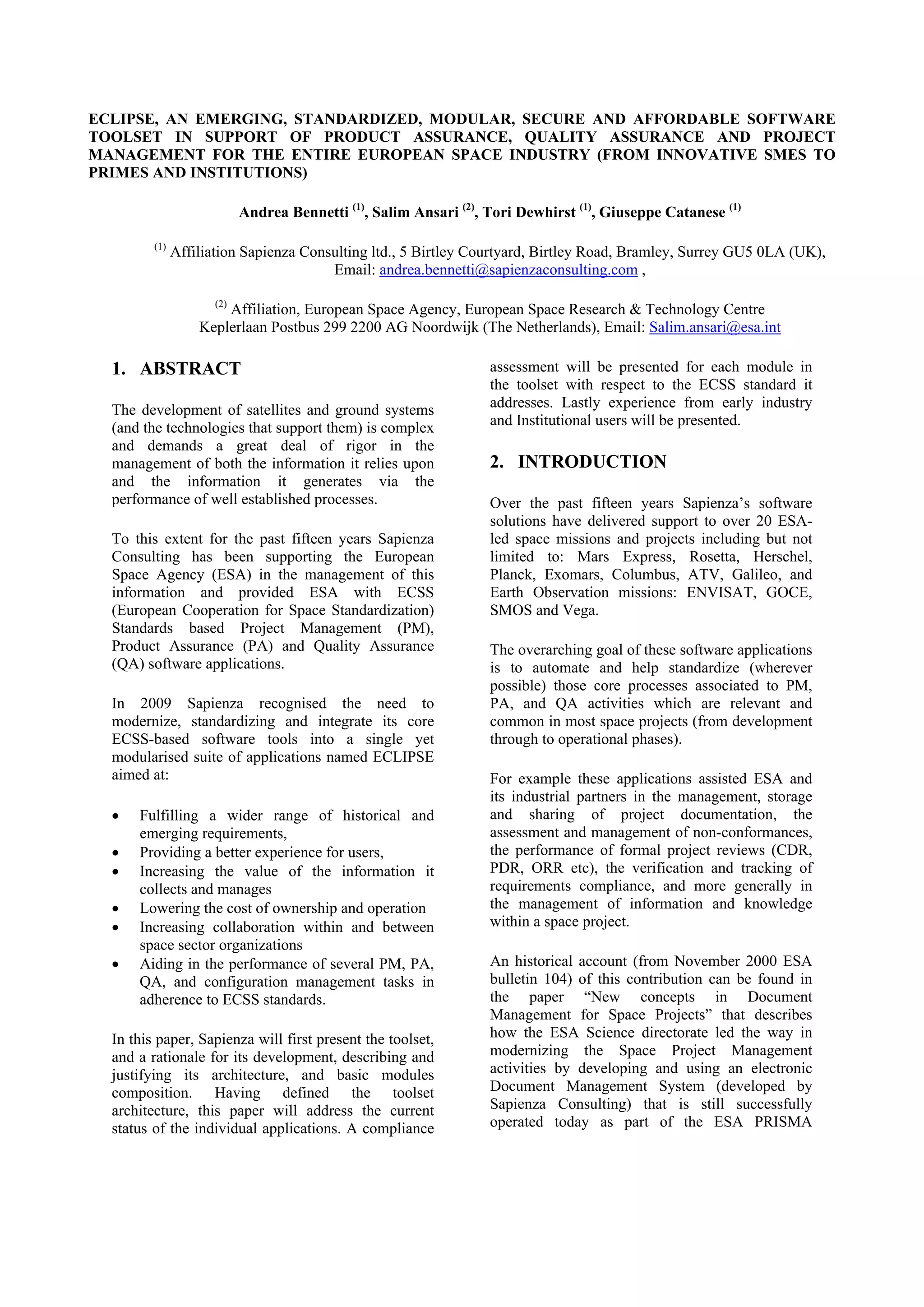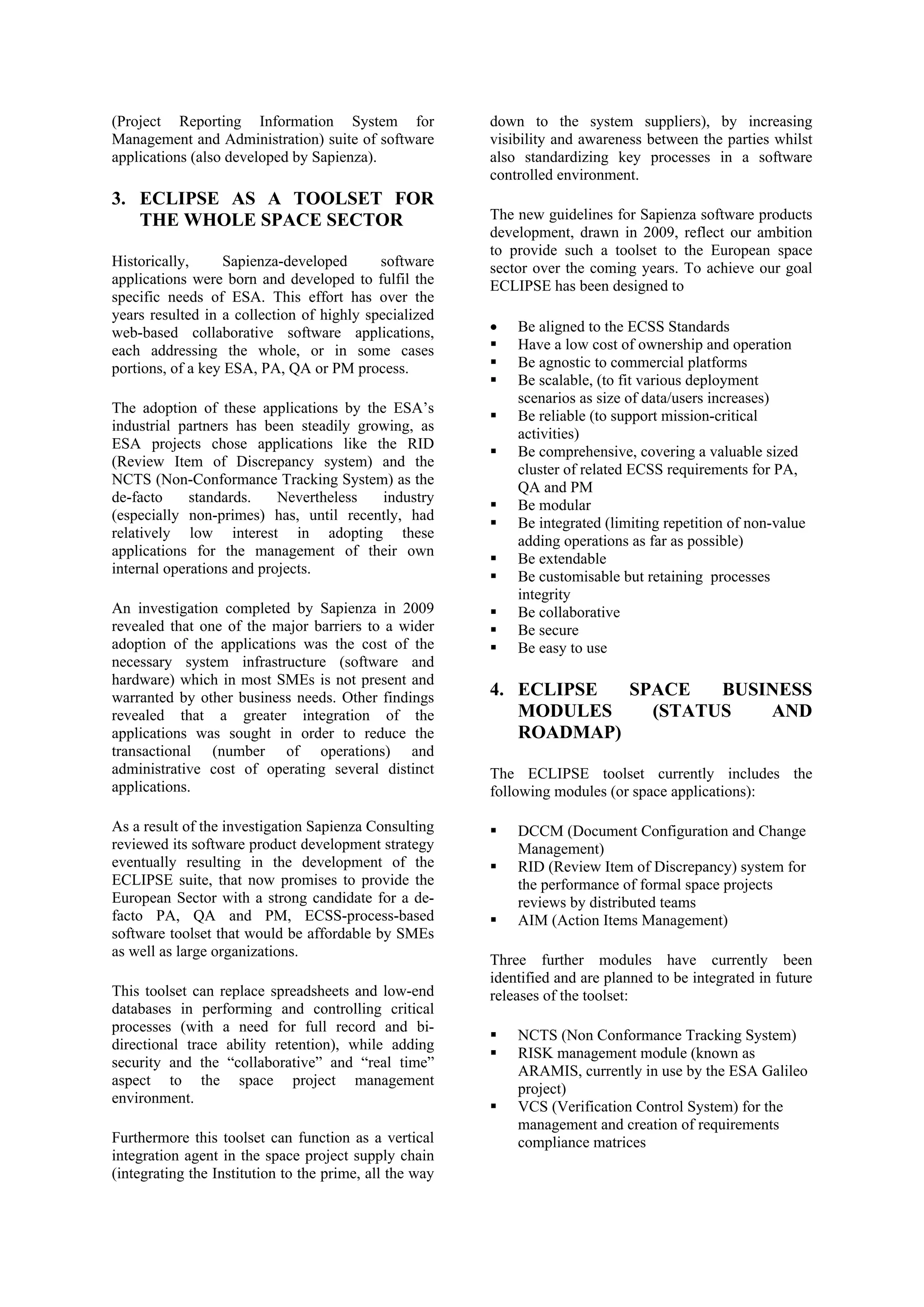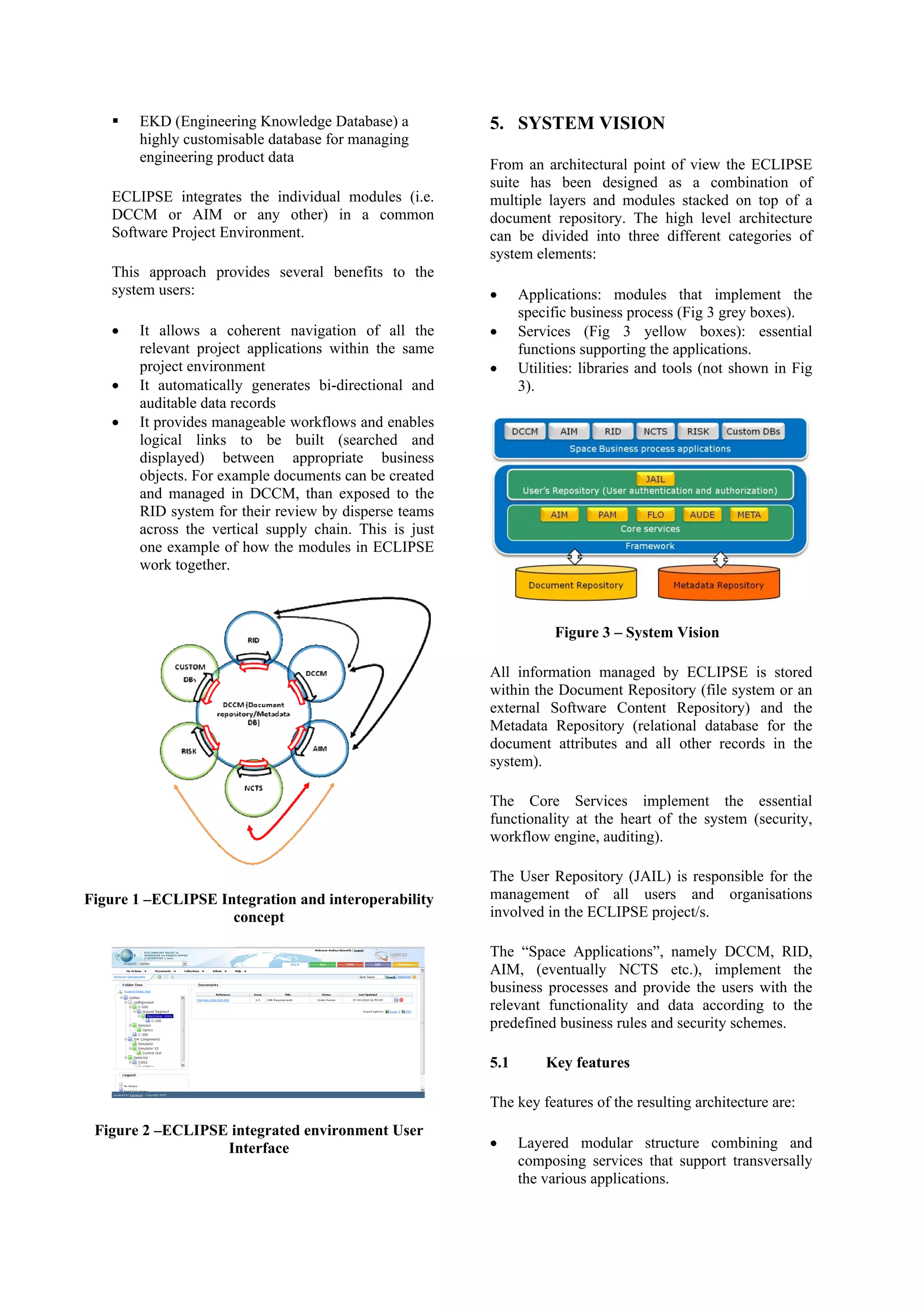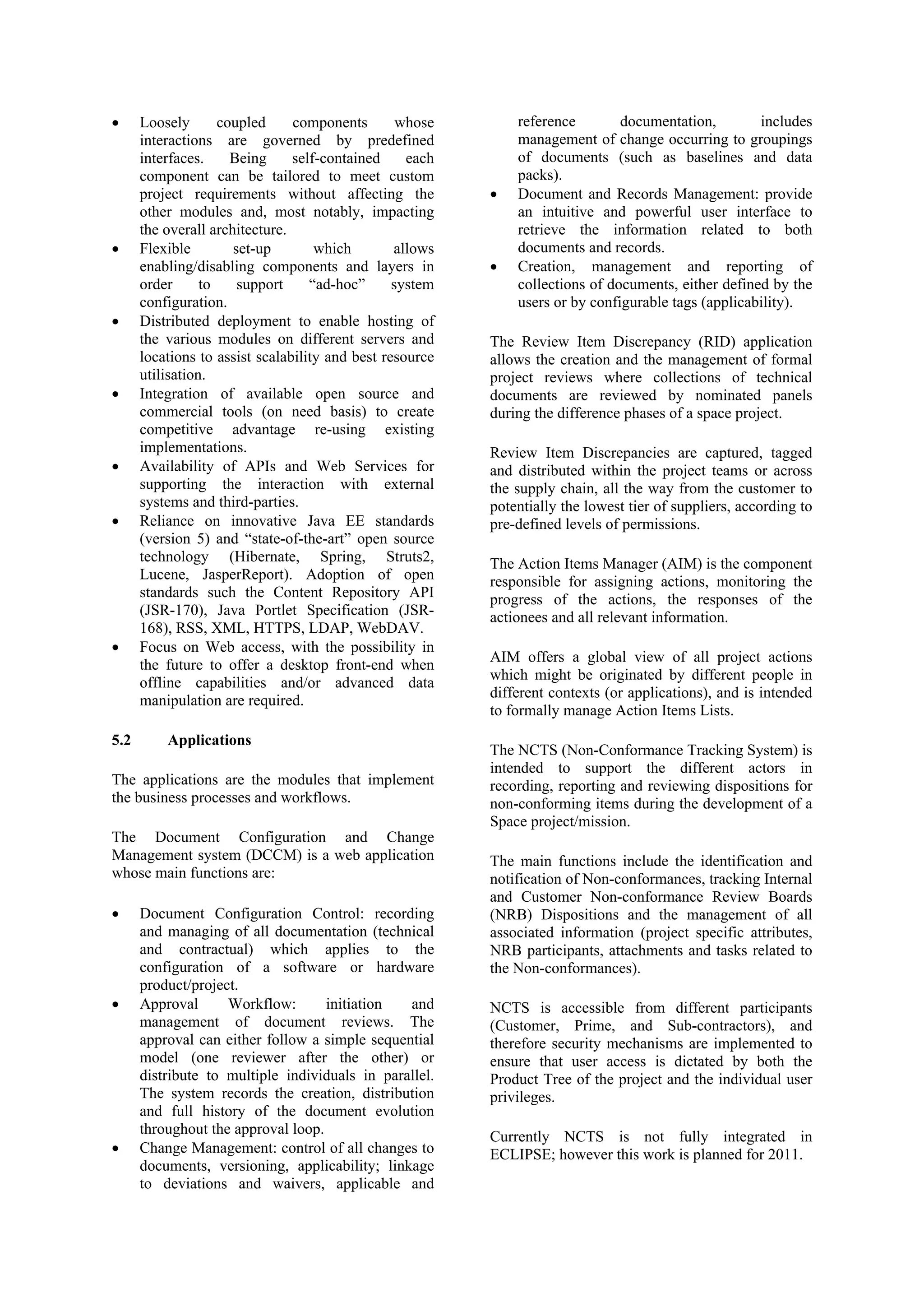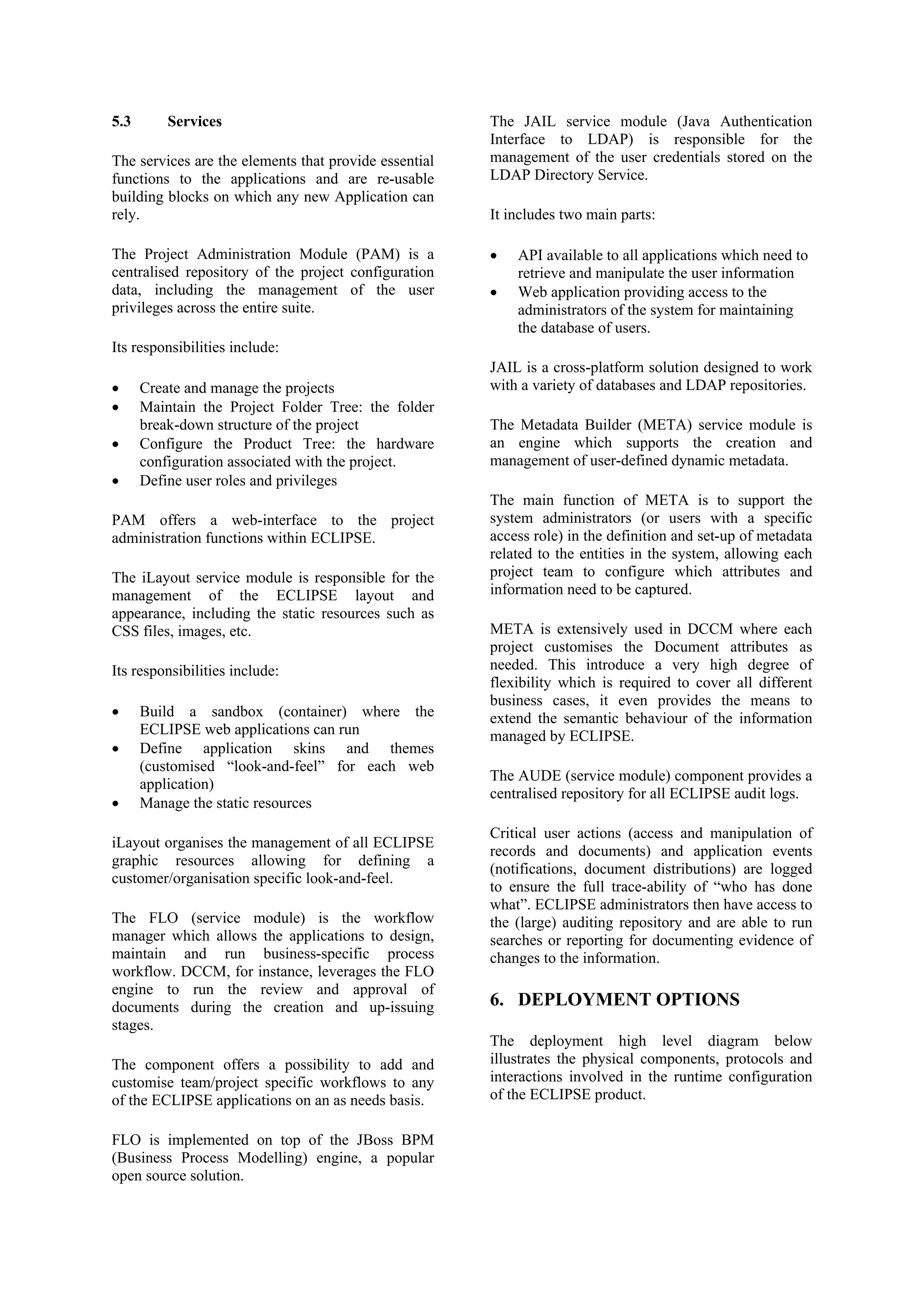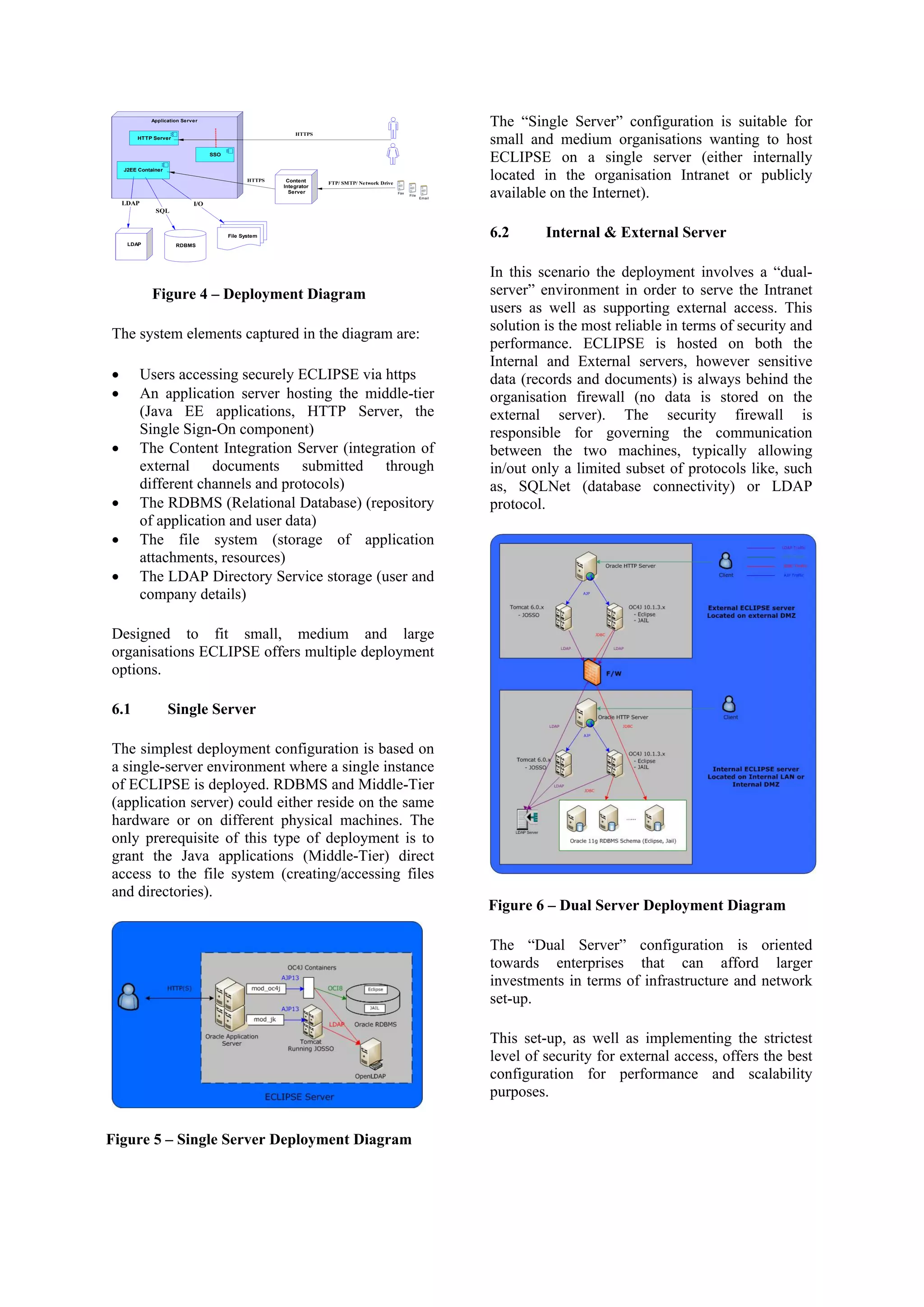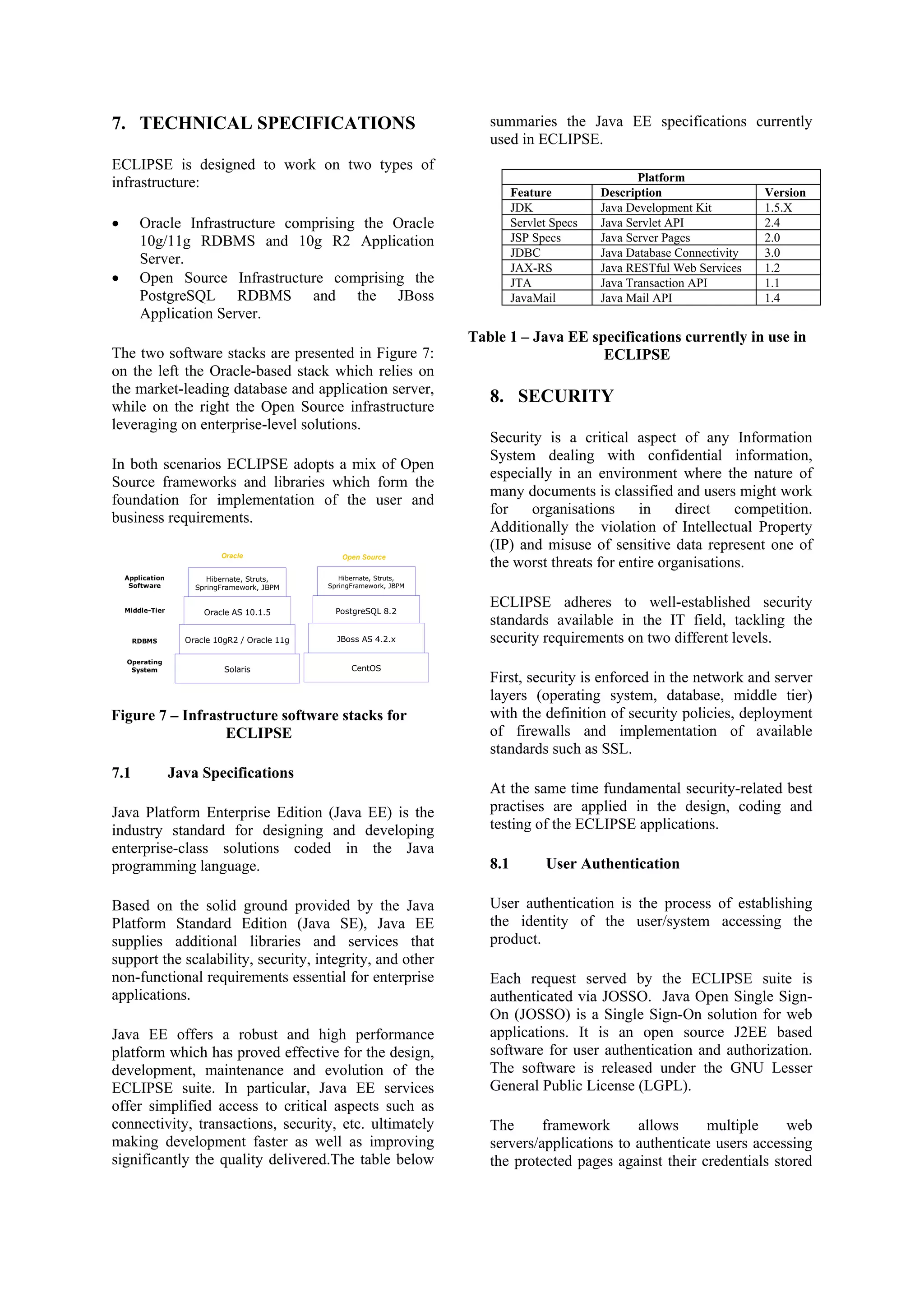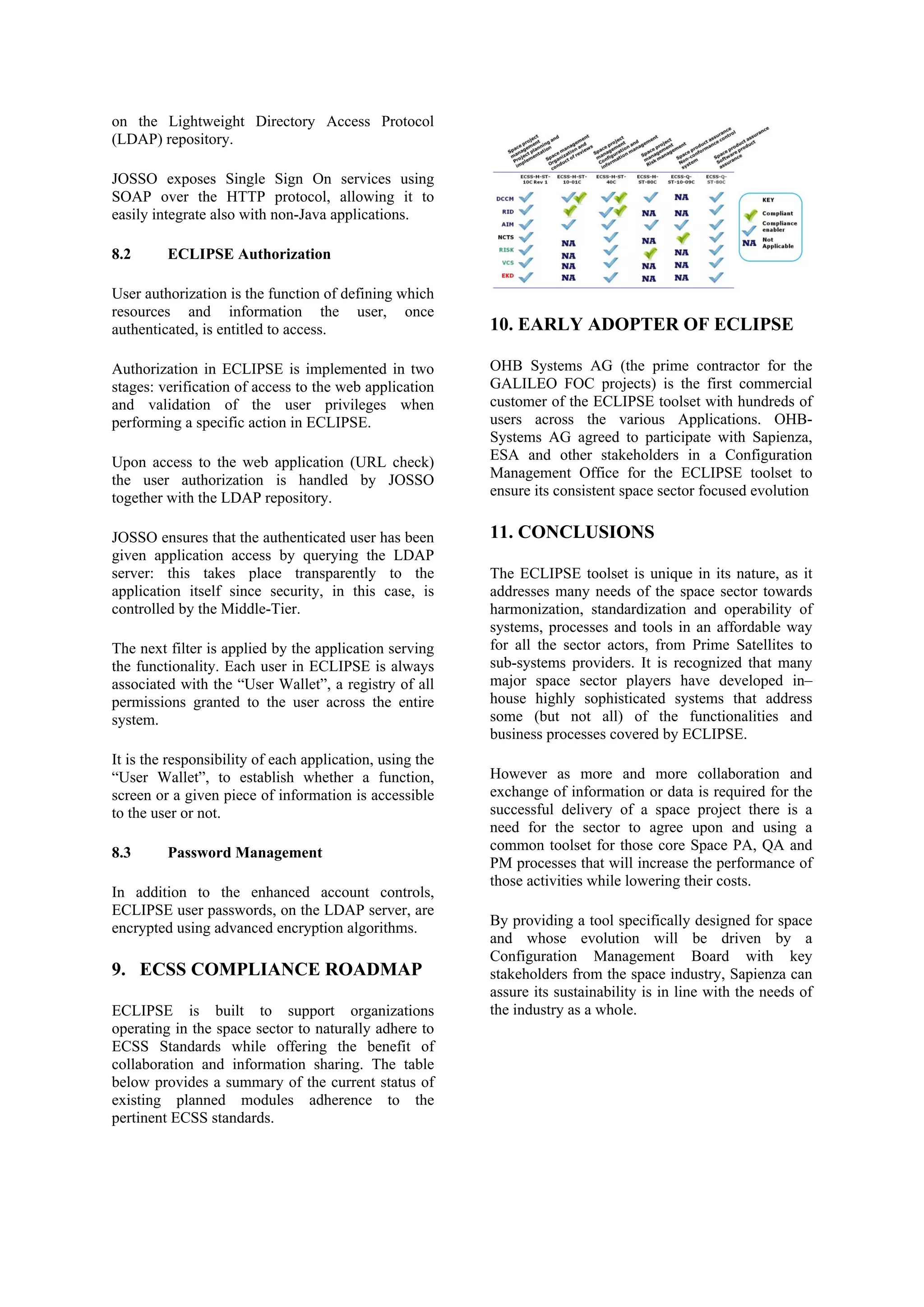This document describes Eclipse, a modular software toolset called Eclipse being developed by Sapienza Consulting to support product assurance, quality assurance, and project management processes for the European space industry. Eclipse integrates existing Sapienza tools and aims to be affordable, standardized, secure, and compliant with European Cooperation for Space Standardization (ECSS) standards. It includes modules for document management, reviews, action items, and more. The goal is for Eclipse to become the de facto standard toolset for managing space projects across Europe.
